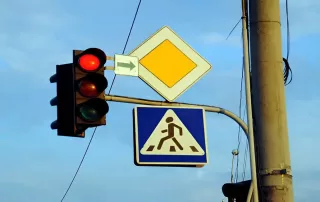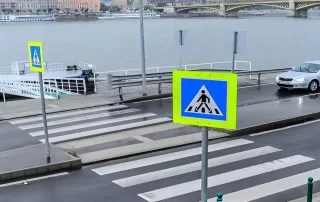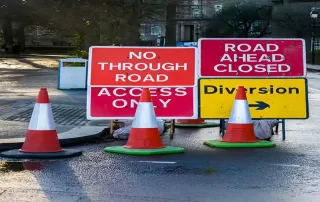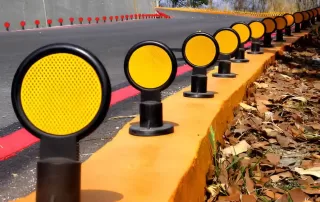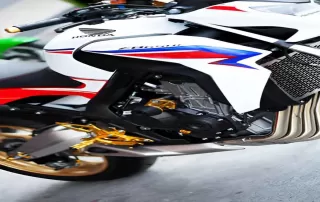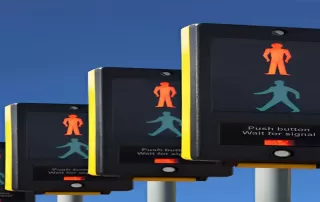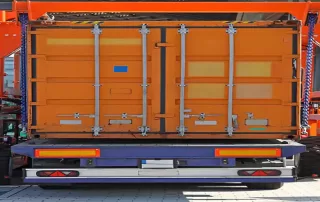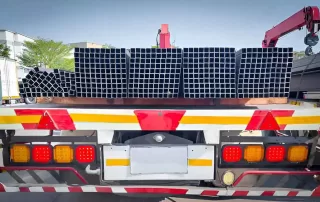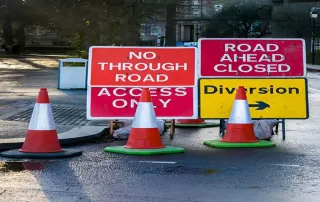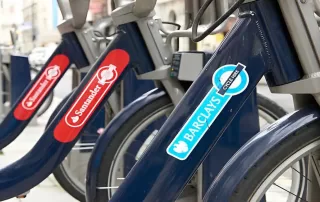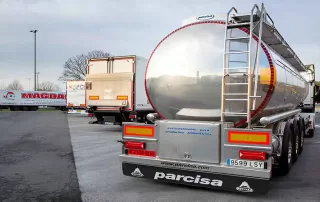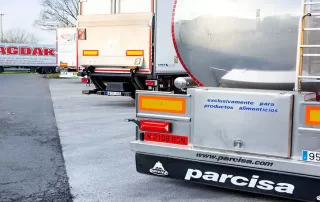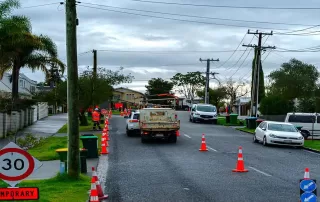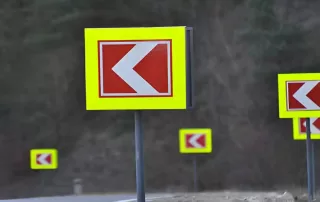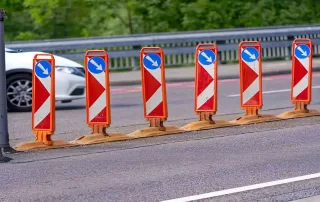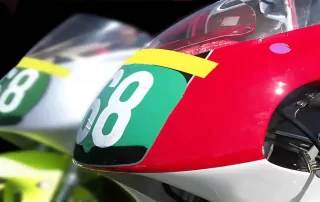Requirements and Applications of prismatic Reflective Film
Anti-reflection film is also called anti-reflection film. Its main function is to reduce or eliminate the reflected light from optical surfaces such as lenses, prisms, and plane mirrors, thereby increasing the light transmittance of these components and reducing or eliminating the stray light of the system.
Why can we see traffic signs at night?
In the dark night, how can a person identify vehicles and pedestrians, and how can he ensure his personal safety without causing traffic accidents? The microprismatic reflective film we are going to talk about today can give a satisfactory answer to the above questions.
What is the development trend of reflective materials?
Reflective film is a kind of retro-reflective raw material that has been made into plastic film and can be directly used. The technology of reflective materials is developing rapidly. The technology of my country's reflective material industry is gradually improving and innovating, which plays a positive role in promoting the technological development of the entire domestic reflective material industry.
What are the merits of prismatic reflective sheeting?
Prismatic reflective film is based on the principle of thin lens imaging. Glass beads are evenly embedded in organic resin on one side as an optical original, and then laminated with epoxy resin to form a glass film.
What are the reflective films commonly used on roads?
The base film of highway traffic signs generally uses super-strong reflective film. Compared with diamond-grade reflective film, super-strong reflective film is more affordable. At the same time, the service life of super-strong reflective film can also meet the use requirements of high-speed reflective film.
Do you know prismatic reflective film?
Prismatic reflective film is made by hot pressing, which first uses microprisms and substrates to press into reflective film, and then coats it with a layer of metal aluminum. However, when the hot pressed pyramids are affected by external factors such as extrusion, weather changes, and water washing, they are easily damaged and deformed, resulting in a significant decrease in reflective function, so this article introduces a new technology attempt.
How to choose prismatic reflective film for traffic signs?
The choice of traffic sign reflective film should be based on the surface scratches, whether the edge is deformed, whether the color is consistent, etc. In the process of film pasting, cleaning and washing products need to be paid attention to, or choose an excellent position to see whether the film is pasted correctly.
Global and China Microprismatic Reflective Sheeting Market Monitoring Survey and Investment Strategy Evaluation Forecast
Prismatic reflective film is different from micro-bead reflective film. It is mainly used in signs and signs of some urban expressways, urban trunk roads, highways and other high-grade roads. Due to the needs of infrastructure construction, this product is widely demanded.
How to solve the life problem of prismatic reflective film?
Microprismatic reflective film has multiple functions such as reflection, transmission, and diffusion. Because of its advantages such as long-term use without damage and high efficiency and energy saving, it is valued by many manufacturers and consumers. However, as the use time increases, the performance of microprismatic reflective film will gradually decline, and its lifespan has become a common concern.
Has prismatic reflectivefilm ever updated its technology?
The technical problem to be solved by the utility model is to provide a micro-prismatic reflective film that can improve the production yield of the product and effectively improve the reflective efficiency. The main representative products of micro-prismatic reflective films can be divided into four categories based on the retro-reflective characteristics and structure: truncated prisms that focus on long-distance recognition, truncated prisms that focus on close-range large-angle reading, full prisms that take into account both long-distance recognition performance and close-range reading performance, and new prism-type reflective films that combine these prism technologies with new material technologies.
How to apply prismatic reflective sheeting ?
Prismatic reflective film is a technology that improves optical performance through the principle of light refraction and reflection. Prismatic film corrects light through the refraction and reflection of light to improve brightness, uniformity and viewing angle. It is widely used in glasses, displays and other fields.
Prismatic optical film protects road traffic safety
As a new type of optical film material, microprismatic optical film has important application prospects in road traffic safety. By improving the driver's visual perception ability, improving the safety of night driving and reducing the risk of driving in rainy days, microprismatic optical film can provide good protection for road traffic safety. In the future, through in-depth research on the preparation process and performance optimization of microprismatic optical film, its durability and applicability will be further improved to provide drivers with a safer and more reliable driving environment.
What are the problems and advantages of prismsatic reflective sheeting?
There are three different types of reflective film application areas, namely engineering grade, high-strength grade and diamond grade reflective film. There are differences and similarities between them, especially the application of microprisms, which is of great help to roads.
Which companies need to use microprismatic reflective film?
This passagemainly expect to introduce the prismatic reflective film that has great functions of refelction than other common films.What’s more,it informs us the application of this film and some conpaies that may need this film to do their basic products manufacture.
What should be paid attention to when constructing prismatic reflective film at high temperature?
In relatively high temperatures, the reflective film should be stored in a ventilated, dry, cool environment, away from direct sunlight, avoid moisture, and pay attention to cleaning and ventilation, otherwise the performance of the three types of microprismatic reflective film may be reduced.
What are the requirements for traffic signs in prismatic scenarios?
Traffic signs are widely used in highways and road construction, but the reflective signs for the corresponding scenes have different specifications.The variety levels of highways use different levels of reflective films to make signs according to the different design speeds. In addition,this passage tells us that how to paste traffic signs.
What is the difference between prismatic reflective film and other ordinary films?
The high reflectivity of micro-prismatic reflective films has made them very popular in the market in recent years. We have also continuously improved the production process to form different reflective effects and finally meet different needs. In addition, some of the most common application scenarios of micro-prismatic reflective films and methods of care and maintenance are explained.
Prismatic reflective sheeting ‘s forward thinking.
The main raw materials used in micro-prismatic reflective materials include photolithography molds, films, etc. The raw materials have a great impact on the quality of the final product. For photolithography molds, reflective material manufacturers are required to have an independent optical design team, high-precision optical engraving capabilities, optical template replication capabilities and high-precision laser welding capabilities.
Full Prism Reflective Film – A New Type of Reflective Film
Full prismatic reflective film is a prismatic retro-reflective material made with a full prism structure. The advent of this full prismatic reflective film breaks through the academic barrier that prismatic reflective film cannot take into account both long-distance and short-distance reflective capabilities.
What are the wide applications of microprisms?
Prismatic reflective sheeting is widely used in road reflective signs due to their ultra-high reflectivity. They are used to make reflective signs and signs in the fields of railways, ports and shipping, airports, mines, fire protection, vehicle license plates, environmental protection, and advertising.
Do you know the development history and uses of microprisms?
The history of microprisms tells us that they are very important for road traffic safety and life safety. In addition, the advantages and characteristics of prismatic reflective sheeting themselves make them have their own corresponding fields and scopes of use in order to better play their advantages.
Classification basis of microprismatic reflective film
According to the structure and characteristics of the prism, the micro-prismatic type can be divided into square prism retro-reflective film with good retro-reflective performance at close range and large angles, fluorescent full prism type with good performance even in daytime and bad weather conditions, and full prism type that takes into account various needs. The structure of the prism is actually the reflection and refraction laws of light.
What is the prospect of prismatic reflective sheeting and its application?
Reflective film is a new functional composite material developed in the past 50 years. Prismatic reflective film was developed in the late 1980s. Due to its high brightness and good durability, it overcomes the shortcomings of the previous prismatic reflective materials, such as small effective incident angle, small observation angle, and asymmetric reflected light beam. Therefore, it is increasingly used in road traffic that requires high brightness.
Importance and usage of reflective car stickers
Reflective stickers are an effective tool to improve the visibility of cars at night or in low light conditions. They are usually affixed to important parts of the vehicle, such as doors, wheels or other places that are easily visible. Car reflective stickers have good reflective properties, and their special materials can reflect light to make the vehicle more eye-catching.
Reflective strips – small and easy to use
Reflective stickers are a must-have small accessory for trucks. Although they look inconspicuous, they are required to be installed on every vehicle, so there are a lot of fakes on the market. The most obvious difference between the authenticity and the fake is to judge by the information logo on the reflective stickers.
